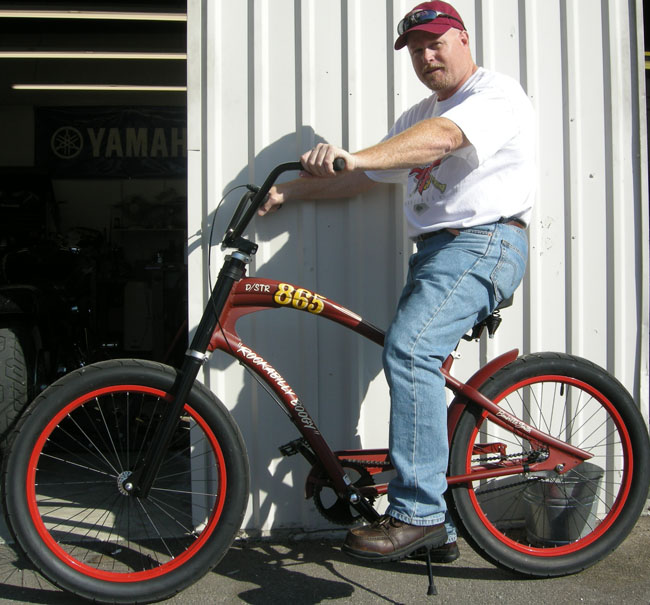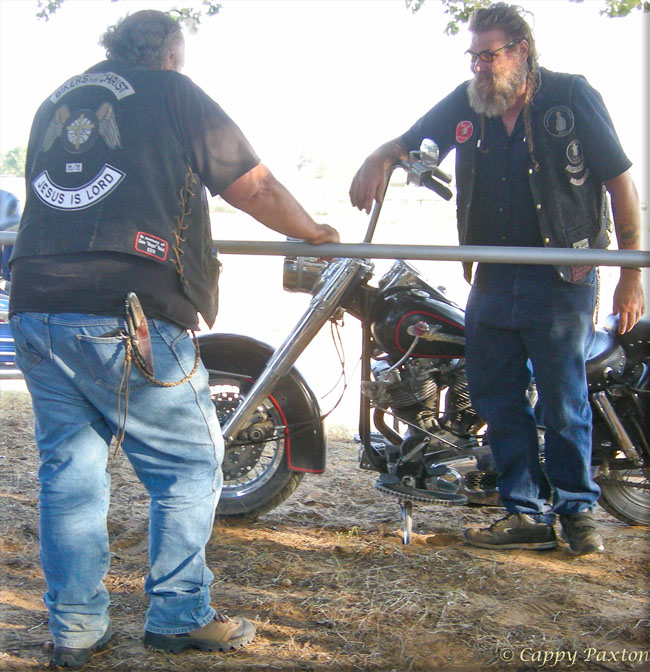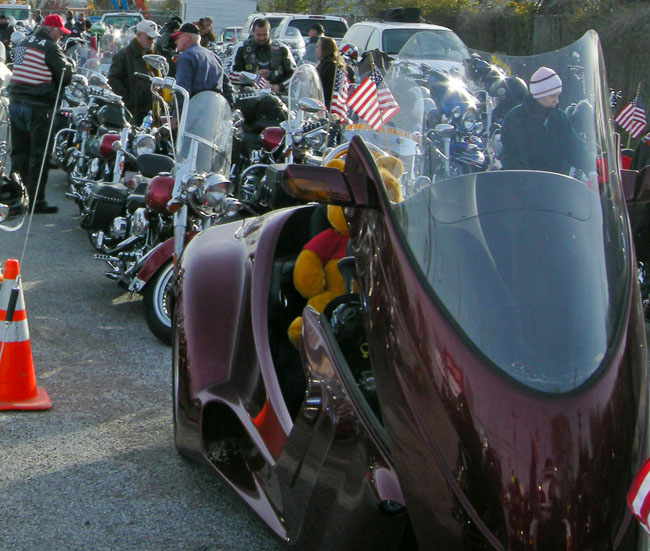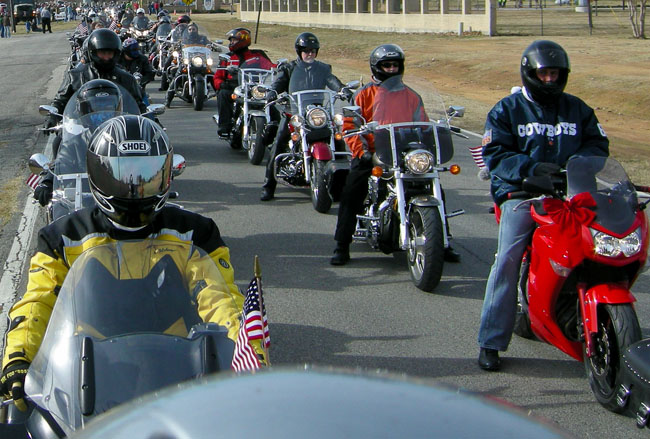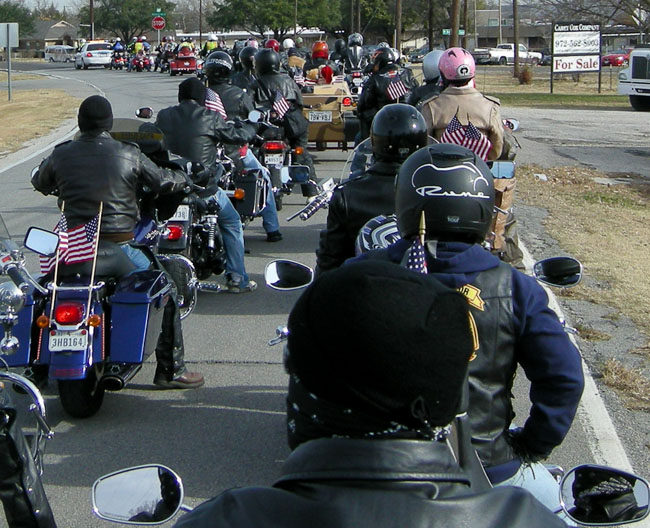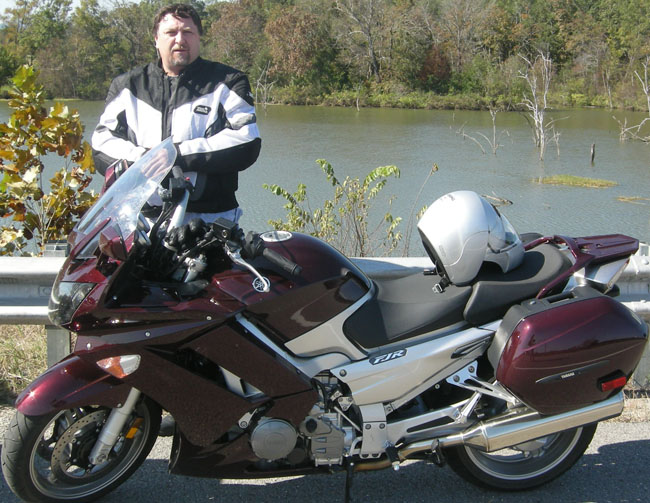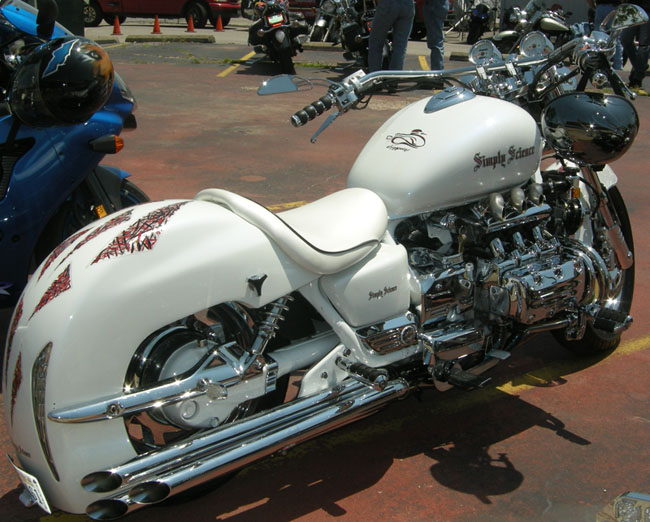

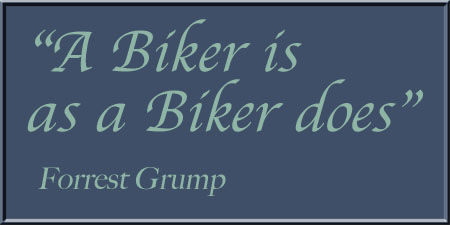
The question is: What is a biker? -
I can hear the pundit now. Everyone knows what a "real" biker is, why ask such a silly question?
I ask this question in all seriousness. In our world of "change" so many things remain the same, as they have for decades. Just about any fan of "Sons of Anarchy" can tell you all about motorcycle clubs. Anyone that has been around the life for more than a minute can tell you all about the post-WWII vets who came home needing an adrenalin fix, which the unprotected, high speed ride on a motorcycle could give them. Alas, even though there is varying degrees of truth to these notions, there are some misleading notions as well.
While it is true that many of the motorcycle club members in the post-WWII era were veterans, the motorcycle club world started long before the Second World War. A very famous MC began on Route 66 in 1935 and is still active today. The Motor Maids began in 1940. In the long history of motorcycle clubs, they are both, by far, not the oldest.
Start your engines, let out the clutch, let's see where this takes us. Hang on; this could be a bumpy ride.
Take a quick look at the cover of the magazine you are reading right at this very moment. On the cover are printed the words, "Daimler's Folly." Have you ever asked yourself where that name came from?
Traveling back a few years, around the year 1880, we find that the fad of the day was the bicycle. With the way tinkers like to tinker we'd expect someone to attach an internal combustion engine to the frame of a bicycle. At the stroke of 1885 enters our tinker, Gottlieb Daimler. Though his wooden framed contraption was equipped with training wheels, I will award Gottlieb with the honor of the "Tinker In Charge." Historian's recognizes him as the engineer who fabricated the first motorcycle.
The T.M.R.A. Daimler's Folly was named in honor of Gottlieb Daimler.
Many think that it is the manly-man that best fits the description of biker - The daring, devil-may-care kind of fellow? I'll touch on that notion in a moment; first, I feel the need to point out a couple of important historical facts. Please allow me to detour toward the topic of something essential to our discussion on motorcycle riding
The Roads -
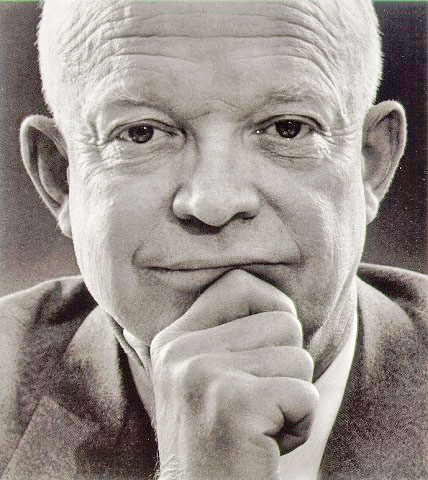
During the Second World War, Ike noticed the Germans were able to speed long their autobahns and this added fuel to his thoughts about the necessity for improved mobility and how beneficial that would be.
As President, Ike acted upon his knowledge, and in 1956 the Federal-Aid Highway Act was passed. He became known as The Father of the Interstate System. In 1990, President George H.W. Bush signed a bill into law renaming the highway system the - Dwight D. Eisenhower National System of Interstate and Defense Highways.
Page 2
So, now we know that in the early days of motorcycles, the roads were pretty darn bad, if they existed at all. How in the blazes did anyone ride under those conditions? When was the last time you complained of a bad road? Don't you just hate potholes and sunken pavement? Can you imagine riding about in the early 20th century?
Baker and O'Brien wanted to see the California Expositions. What better way than to ride a motorcycle. Oh my, did they ever get the press for this ride. What brave men they were indeed. Even though the American Indians were pretty much off the warpath by May 3rd, 1915 there were still many dangerous obstacles to overcome. For instance, they had to reroute to avoid forest fires, and other hair-raising stuff, that plays like a silent movie thriller, replete with dramatic pipe organ accompaniment. Go to the Indian Motorcycle website where you can find more information about their journey, or google (used as a verb) Bud Baker and Dick O'Brien.
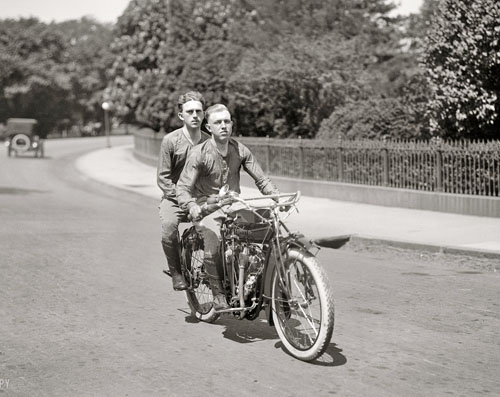
On May 2nd, a young woman and her mother set out for the Pacific Ocean from their home in New York. Effie Hotchkiss wanted to travel across the nation and felt the best way to do that would be on a motorcycle (I can see you, reading this paragraph, nodding your heads in agreement and thinking, "Of course that's the best way to see America."
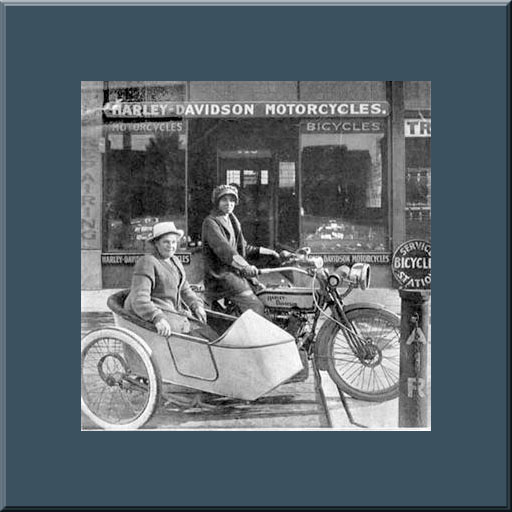
In the 1920's, Bessie Stringfield wanted to ride. She wasn't about to let the current mindset keep her from her dreams. Approaching eighty, the doctors told her she should give up motorcycle riding. Her reply was, "If I don't ride, I won't live long. And so I never quit." Bessie did have a couple of obstacles that made it very hard for her to live out her dreams. One, she was a woman. Two, she was a woman of African ancestry. The state of Florida wasn't going to give her a license, that is, until a local policeman interced'ed on her behalf. I offer a respectful helmet tip to Bessie and her friend. I suggest you google Bessie if you want to know more about her achievements.
Page 3
A common characteristic of people in the motorcycle world is the abundance of risk takers. They tend to be outside the mainstream. People who take pride in doing what they want and pretty much saying what is on their minds. Often, you will hear someone describe a biker as, "a little out there." In the motorcycle world, one usually finds a great deal of tolerance towards the peccadillos each individual rider brings to the mix.
There are a couple of modern-day groups of riders that take their ride to the limit. A select few jump their motorcycles high in the air, exiting their seats, twisting and turning in all kinds of crazy ways. Then there are the riders who ride on one wheel, front or back, and obtain dizzying speeds that make most modern day street riders tightly grip their sphincters at the very thought of it. Some of those dare-devils will work as a team, blocking traffic, while they show off their one-wheel skills for all on the road to observe. While I question their motives and judgment, I can't help but admire their moxie. My mind drifts back to the time of three-lane boulevards, white t-shirts with a pack of Lucky Strikes rolled up in the sleeve, and Wolfman Jack on the radio. I see a teen between two candy-colored sedans, holding a kerchief high above their head as the drivers wait for them to drop it, signaling the start of the race.
As a kid growing up in San Diego, most of us were driving Fords or Chevy's with enough Mopar thrown in to make it interesting (Hemi's have been around for a very long time). The powerful V-8 replaced the straight six. The sight of a mid-fifties Chevy with a blueprinted 283 powerhouse still makes me quiver. The rumble of a revving Merc MEL makes me weak in the knees. Like the motorcycle rider, the drivers of the golden era of street racers were always tinkering with their engines to make them go faster. At that time in history, the local politic would not let the stock car junkies build a racetrack in the county. What to do? Why they block off a couple of miles of the busiest boulevard and conduct exhibition street races in protest, that's what they do.
In the day, the Harley and Indian riders used to have tremendous races. I wish I had been alive then to see it. Fortunately, I got to know a couple of the original racers, both having long since joined the eternal MC. What most of us think of when we envision motorcycle racing is the high-speed track at Daytona. The towering light trees of the drag strips are emblazoned in our minds, intensifying our excitement and filling us with anticipation as they cycled through their colors. How wonderful it is to see speed records broken while watching the very best in technology that our modern era has to offer. What many of us forget is that the original Daytona races were held on the beach. The drag races of old were almost exclusively run on dirt. When was the last time you took a dirt road, much less raced down one? I am not suggesting you do, I am just asking.
As I see it, the downside to this discussion is our fall into apathy. It has become painfully apparent that the risk taking, the "out-there", is being drowned by the uniform attitude of taking the tried and truth path, you know, the one that leads to an eatery or a saloon. Of course everything has limits but how do you know what they are
What has become of that daring-do? Where are the nuts, the bolts ... the ball bearings? There are many reading this article that still believe that the image of the biker they have imprinted on their brains is that colorful guy. It is far more likely that what we find, as a general rule, is a very domesticated, leather vest wearing, deliver a gift at a Christmas toy run, sort of rider. Most are fairly well paid citizens who, due to the high cost of their machines, have too much to lose to really cut loose. Besides, riding on dirt roads might get their chrome dirty.
There is no need to be reckless but don't try to convince me that everything has been done that can be, or there is nothing new under the sun. Every time I set out on a ride, by the time I return home, I have experienced and seen a dozen new things. I'd like to think a biker never stops looking. A biker rarely uses the expression, "I can't." A biker is always planning on where they are going next. When Effie ran out of inner tubes on her cross-country journey, she rolled up clothing, stuffed them in the tires, and kept going to the next town, where she stocked up on additional tubes. It wasn't about too hot, too cold, too far. It was with wide-eyed expectation of what was just around the next bend in the road that kept them going.
Isn't it grand that we have motorcycles with shock absorbers, windscreens and cruise control? Enter, the Geezer Glide, you know the ones we swore we'd never ride. At about the cost of a mobile home, these behemoths have extended the riding years significantly. The advances in motorcycle safety, either through legislation or equipment, are a big plus. It is great to see the continuation of rallies where we can band together, sharing our problems and expectations, selling our goods and services. The rally is a joyful time; a time of celebration and also a tremendous opportunity to establish a cohesive force to work together towards solving our motorcycle related issues, not to mention, partying our hearts out.
It is time to take Amana to the barn. She's worked hard and needs some TLC. We both need to get in tip-top shape for the State Rally. I hope to see you there. I am leaving the biker question open ended and will let you answer it for yourselves. I am not arrogant enough to presume to answer this question for you. I just wanted to give you something to think about.
Y'all join me next month. Whatever you do, don't forget to -


